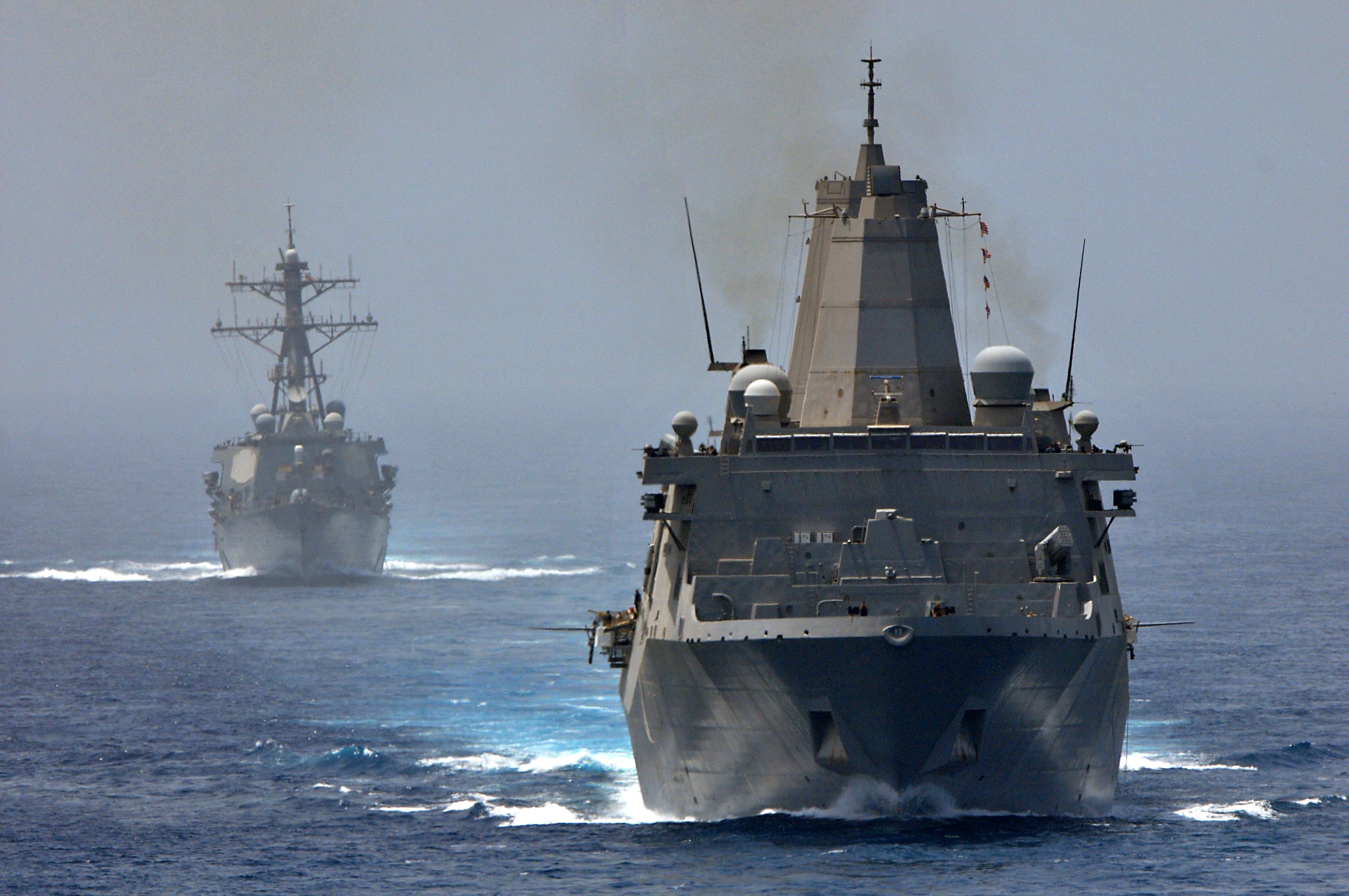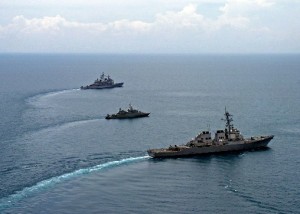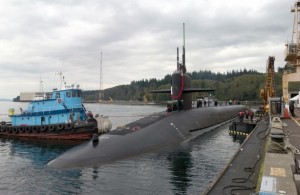
Climate change will make issues like regional instability, extremism & terrorism more challenging
This morning I testified to the Pittsburg EPA hearing on the Clean Power Plan Proposed Rule. This is a landmark rule that could alter the future trajectory of the climate, while also significantly impacting how the U.S. produces electricity around the country.
Here is what I said:
 Thank you for the opportunity to comment on the Environmental Protection Agency’s “Clean Power Plan” proposed rule. I’m here today to commend the EPA for its efforts to address climate change. I am not a regulatory expert, so I will not comment on the specifics of the rule, but I do support the EPA for its ambition and goals.
Thank you for the opportunity to comment on the Environmental Protection Agency’s “Clean Power Plan” proposed rule. I’m here today to commend the EPA for its efforts to address climate change. I am not a regulatory expert, so I will not comment on the specifics of the rule, but I do support the EPA for its ambition and goals.
If there’s one thing my service as a Naval Officer and my time at the Pentagon has made very clear, it’s that the United States can no longer wait to confront the threat posed by climate change.
Speaking from a national security and defense perspective, the “threat” I mean is more than just rising sea levels and melting ice caps. My concerns lie in how climate change will make issues like regional instability, extremism and terrorism more challenging for our country.
Something few people realize is that roughly a decade ago, the Admirals and Generals who were leading our Armed Forces not only began to acknowledge climate change’s role in compounding national security threats, but they also began taking measures to address the problem directly. From their perspective, climate change was not a matter of state or national politics but a very real condition that defense planners had to consider.
Most notably, in 2009, Admiral Jonathan Greenert, who now serves as the leader of the United States Navy, launched Task Force Climate Change. Under the direction of now retired Admiral David Titley, this task force was instituted to study and make recommendations to Navy leadership on issues relating to policy, investment, and action that will best affect future naval force structure and operations. Issues that Task Force Climate Change address range from identifying the right ships to build so they are equipped to operate in an ice-free Arctic to the restructuring of the Navy’s bases so they are best suited to withstand rising sea levels.
Today, the Pentagon’s commitment to planning for climate change has expanded to the 2014 Quadrennial Defense Review. Better known as the QDR, this document serves as the military’s analysis of overall strategic objectives and potential military threats. It notes:
“Climate change poses another significant challenge for the United States and the world at large… threat multipliers… will aggravate stressors abroad such as poverty, environmental degradation, political instability, and social tensions – conditions that can enable terrorist activity and other forms of violence.”
The military gets climate change. And I wish I could stand here and say that it’s because our uniformed leaders have suddenly become determined to save the environment. But like big corporations who are also beginning to acknowledge the challenges climate change presents, true interest lies in the overall threat to the bottom line. In the case of corporate America, that means dollars. In the case of the military, that means our national security.
I now want to highlight a few of these challenges to better explain the concept of a “threat multiplier.”
 Take the sub-Saharan region of the Sahel. This area of the world is already poor and has a marginal economic base centered mainly on agriculture. Introduce a period of extended drought and the region’s limited resources automatically become scarcer. A possible consequence is that the people who inhabit the region, unable to survive off of their land, relocate to new cities or regions occupied by other social groups. And when they do, subsequent consequences occur. Increased population density combined with poverty might breed the kind of political instability and extremism seen in Pakistan. Or we could see new conflicts based on ethnic cleansing like those we’ve already witnesses in South Sudan and Rwanda. This, from the perspective of our military leaders, is how climate change – in this case, drought – multiplies a threat.
Take the sub-Saharan region of the Sahel. This area of the world is already poor and has a marginal economic base centered mainly on agriculture. Introduce a period of extended drought and the region’s limited resources automatically become scarcer. A possible consequence is that the people who inhabit the region, unable to survive off of their land, relocate to new cities or regions occupied by other social groups. And when they do, subsequent consequences occur. Increased population density combined with poverty might breed the kind of political instability and extremism seen in Pakistan. Or we could see new conflicts based on ethnic cleansing like those we’ve already witnesses in South Sudan and Rwanda. This, from the perspective of our military leaders, is how climate change – in this case, drought – multiplies a threat.
Note that this isn’t an entirely speculative problem. Less than a year ago, Typhoon Haiyan made landfall in the Philippines with the highest sustained winds recorded in history. When it did, people living in densely populated and poor regions were left in ruin. In the wake of the storm, the United States responded by deploying the George Washington Strike Group – over 8,000 sailors and marines – to the region. Our military leaders did this to keep a humanitarian disaster from compounding and to ensure the stability of one of our most important regional allies.
Now, this isn’t only a problem occurring overseas. Defense Support to Civil Authority is a growing military mission in the United States and has a direct effect on the readiness of our National Guard and other components of our domestic force. If a wide-scale flood were to occur here in Pennsylvania, a threat the National Climate Assessment makes specific reference to, Americans will see our troops deployed to provide logistical aid, humanitarian relief and law enforcement support. They will also see our troops successfully complete this mission because the military identified a potential vulnerability – in this case, flooding – and prepositioned itself in manner to confront the challenge. We did it prior to Typhoon Haiyan devastating the Philippines and we did it before Hurricane Sandy devastated New York and New Jersey.
The Department of the Defense manages property in all 50 states, 7 U.S. territories and in 40 foreign countries, and is comprised of almost 300,000 individual building. This alone is valued at over $600 billion dollars and since the start of 2013, the effects of climate change have cost these facilities millions. Rising sea levels have done damage to the Navy’s coastal installations, wildfires have forced evacuations at the Marine Corps’ Camp Pendleton, and the Army has seen extreme rain events washout areas of the National Training Center at Fort Irwin.
Finally, for those who question the science, I would say that reducing greenhouse gases while implementing measures to adapt to the effects of climate change is basic risk management. Military planners routinely operate under uncertainty and make decisions based on incomplete information.
If we fail to address climate change we know that our military will have to respond to more disasters, extremists will have more recruits to draw from, the world will see more conflicts over increasingly scarce resources. And Americans will foot the bill. It is time that we change the nature of this debate from fact or fiction, to a debate over how to best mitigating and then fix the problem. The EPA’s proposed rule is an important step forward in addressing the challenges of climate change, and I commend them for their efforts.







[…] Security Project’s Jon Breed explains what a “threat multiplier” means when discussing energy and […]